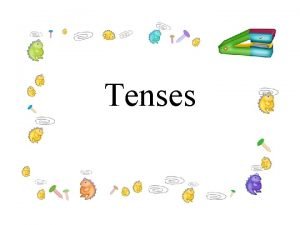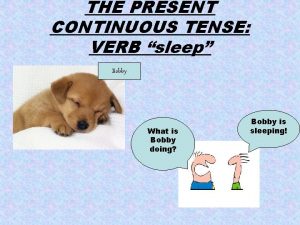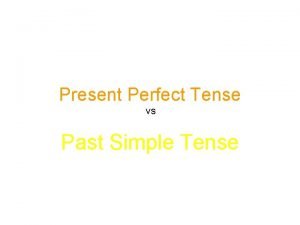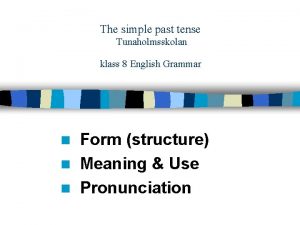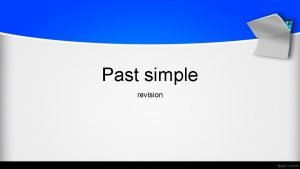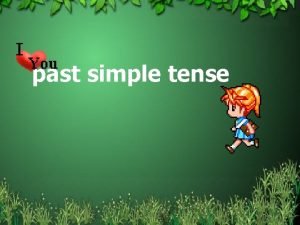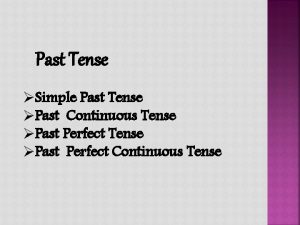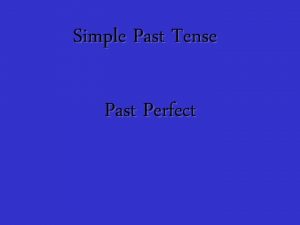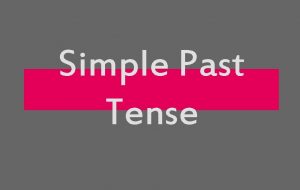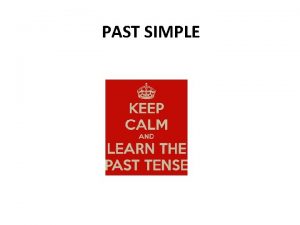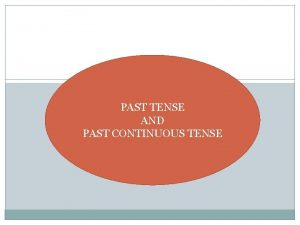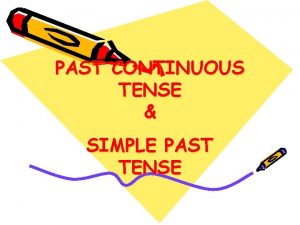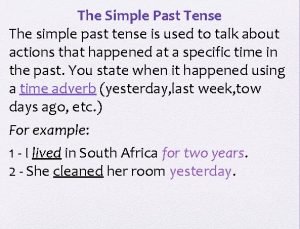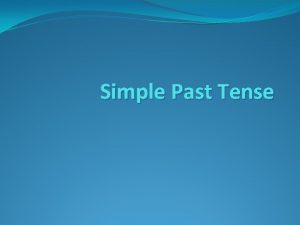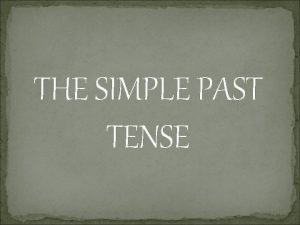The simple past tense Meaning Use n Form















- Slides: 15

The simple past tense Meaning & Use n. Form (structure) n. Exercise n

Meaning & Use When do we use the Simple Past tense? n We use the Simple Past to express the idea that an action started and finished at a specific time in the past. n. What are some common time expressions used with the past tense?

Examples: I saw Maria yesterday Last Friday, Friday the students took their spelling and vocabulary tests. They got married two years ago

How do we form the simple past tense. . . ? English has two types of verbs in the past tense: n n Regular verbs n Irregular verbs n Look at the following list of past tense verbs… which verbs are regular, and which are irregular? n n n taught walked studied gave became cried lived did

Regular verbs are verbs that …. …end with –ed Simple Form Walk Study Cry Live Past Tense

Irregular verbs are verbs that. . …DON’T end with –ed some irregular verbs Have a vowel change in the past tense: Simple Form become give drive forget Past Tense became gave drove forgot

other irregular verbs Have a different kind of change: Simple teach bring Leave Hear Buy Past taught brought left heard bought

And some irregular verbs don’t change at all. . . Simple hit put set Past hit put set The children set the table every Sunday. The children set the table last night.

For regular verbs, simply use the –ed form of the verb in a positive sentence. When I was a child, I ______ the piano. (play) Donna _______ Paris. (visit)

For irregular verbs, use the correct past tense form in positive sentences. (We use the same form with different subjects. ) Last week, I ______ you a letter. (send) The students _____an English exam. (have) They _______ a great job! (do)

For negative sentences, USE I went to work yesterday. I didn’t go to work yesterday.

Exception = VERB BE! The verb be is special. Never use DID NOT or DIDN’T with the verb BE. Instead, just use:

For Yes/No questions, USE Did you go to work yesterday? Did you come yesterday?

Put the verbs (between brackets) into the correct form (simple past). Last year, I (spend) ____my holiday in Ireland. It (be) ____great. I (travel)______ around the city by car with two friends and we (visit) ____lots of interesting places. In the evenings, we usually (go)_______ to a café. We (be) ____very lucky with the weather. It (not / rain)______ a lot. We(see) ____some beautiful rainbows. I (have) ______ an amazing holiday!

Sources: n http: //www. authorstream. com/Presentati on/bbogage-11679 -simple-past-tenseeducation-ppt-powerpoint/ n http: //www. slideshare. net/LALA 28/thepast-simple-ppt-presentation
 Present past future simple continuous perfect
Present past future simple continuous perfect Past continuous tense while
Past continuous tense while Progressive past
Progressive past Present simple tense verb
Present simple tense verb Simple past vs past continuous vs past perfect
Simple past vs past continuous vs past perfect Write a story using past simple and past continuous
Write a story using past simple and past continuous Types of tenses
Types of tenses Past simple tense sleep
Past simple tense sleep Past simple remember
Past simple remember Drive simple present tense
Drive simple present tense When use past simple
When use past simple Don't past tense
Don't past tense Past perfect continuous and past simple
Past perfect continuous and past simple Past progressive vs past perfect progressive
Past progressive vs past perfect progressive Stole present continuous tense
Stole present continuous tense Past simple tense regular verbs affirmative form
Past simple tense regular verbs affirmative form



